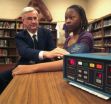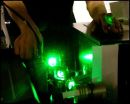(Press-News.org) The effectiveness of spinal manipulation divides medical opinion. On bmj.com today, experts debate whether spinal manipulation for neck pain should be abandoned.
Spinal manipulation is a technique that involves the application of various types of thrusts to the lumbar spine (lower back) or cervical spine (neck) to reduce back pain, neck pain and other musculoskeletal conditions.
Neil O'Connell and colleagues argue that cervical spine manipulation "may carry the potential for serious neurovascular complications" and that the technique is "unnecessary and inadvisable."
They say that studies "provide consistent evidence of an association between neurovascular injury and recent exposure to cervical manipulation." Such injuries include vertebral artery dissection (a tear to the lining of the vertebral artery, which is located in the neck and supplies blood to the brain) and stroke.
They point to a Cochrane review of randomised trials of neck manipulation or mobilisation which concluded that as a stand-alone treatment, manipulation provides only moderate short term pain relief versus controls, sham manipulation, or muscle relaxants, and is unlikely to offer meaningful long term benefit for people with neck pain.
Other recent large, high quality trials reinforce this message, suggesting that manipulation is not superior when directly compared with other physical interventions such as exercise, they add.
They argue that, given the equivalence in outcome with other forms of therapy, manipulation seems to be clinically unnecessary. "The potential for catastrophic events and the clear absence of unique benefit lead to the inevitable conclusion that manipulation of the cervical spine should be abandoned as part of conservative care for neck pain," they conclude.
But David Cassidy and colleagues argue that cervical spine manipulation is a valuable addition to patient care and should not be abandoned.
They point to high quality evidence that "clearly suggests that manipulation benefits patients with neck pain" and raises doubt about any causal (direct) relation between manipulation and stroke.
When combined with recent randomised trial results, "this evidence supports including manipulation as a treatment option for neck pain, along with other interventions such as advice to stay active and exercise," they say.
However, they acknowledge that, when risk, benefit, and patient preference are considered, "there is currently no preferred first line therapy, and no evidence that mobilisation is safer or more effective than manipulation. Thus the identification of safe and effective interventions for neck pain remains a high priority."
They conclude: "We say no to abandoning manipulation and yes to more rigorous research on the benefits and harms of this and other common interventions for neck pain."
### END
Should spinal manipulation for neck pain be abandoned?
Head to head: Should we abandon cervical spine manipulation for mechanical neck pain?
2012-06-08
ELSE PRESS RELEASES FROM THIS DATE:
Patients suffering from pre-diabetes at potential future risk of stroke
2012-06-08
Millions of people suffering from pre-diabetes may be at a higher risk of stroke, a study published on bmj.com today suggests.
Pre-diabetes is characterised by higher than normal blood glucose levels that, if left untreated, develops into type 2 diabetes. The scale of the problem is enormous and growing, with an estimated 79 million people in the US and 7 million people in the UK affected.
People with pre-diabetes also harbour the same vascular risk factors as people with type 2 diabetes, such as high blood pressure, high cholesterol and obesity, but its effect on ...
By adding VSL#3 probiotic to traditional therapies UC patients can improve remission rates
2012-06-08
GAITHERSBURG, MD, June 7 – As one of the few probiotics with medical food designation for specific illnesses, VSL#3® has been the subject of a collection of more than 80 studies that have demonstrated its use in the dietary management of IBS, ulcerative colitis, and an ileal pouch. Ulcerative colitis patients, in particular, have been shown to benefit from adding VSL#3 medical food to their prescription drug regimen. One particular study shows that the combination of VSL#3 and traditional drug therapy can improve remission rates over drug therapy alone by 10 to 17 percent, ...
Haematopoietic stem cell transplantation increases survival in systemic sclerosis patients
2012-06-08
Berlin, Germany, June 7 2012: Initial results from an international, investigator-initiated, open label phase III trial were presented at EULAR 2012, the Annual Congress of the European League Against Rheumatism. Data indicate that haematopoietic stem cell transplantation (HSCT) results in better long term survival than conventional treatment for patients with poor prognosis early diffuse cutaneous systemic sclerosis.
The ASTIS (Autologous Stem Cell Transplantation International Scleroderma) trial enrolled more than 150 patients between 2001 and 2009, and randomised ...
Mapping genes: Mayo Clinic finds new risk factors for neurodegenerative diseases
2012-06-08
JACKSONVILLE, Fla. — Using a new and powerful approach to understand the origins of neurodegenerative disorders such as Alzheimer's disease, researchers at Mayo Clinic in Florida are building the case that these diseases are primarily caused by genes that are too active or not active enough, rather than by harmful gene mutations.
In the June 7 online issue of PLoS Genetics, they report that several hundred genes within almost 800 brain samples of patients with Alzheimer's disease or other disorders had altered expression levels that did not result from neurodegeneration. ...
Surgeon experience affects complication rate of spinal stenosis surgery
2012-06-08
Philadelphia, Pa. (June 7, 2012) - For patients undergoing surgery for spinal stenosis, the risk of complications is higher when the surgeon performs very few such procedures—less than four per year, suggests a study in the June issue of Neurosurgery, official journal of the Congress of Neurological Surgeons. The journal is published by Lippincott Williams & Wilkins, a part of Wolters Kluwer Health.
In contrast, the complication rate is not significantly affected by the volume of spinal stenosis surgeries performed at the hospital, according to the new research. The senior ...
Meditation practice may decrease risk for cardiovascular disease in teens
2012-06-08
AUGUSTA, Ga. – Regular meditation could decrease the risk of developing cardiovascular disease in teens who are most at risk, according to Georgia Health Sciences University researchers.
In a study of 62 black teens with high blood pressure, those who meditated twice a day for 15 minutes had lower left ventricular mass, an indicator of future cardiovascular disease, than a control group, said Dr. Vernon Barnes, a physiologist in the Medical College of Georgia and the Georgia Health Sciences University Institute of Public and Preventive Health.
Barnes, Dr. Gaston Kapuku, ...
Armored caterpillar could inspire new body armor
2012-06-08
RIVERSIDE, Calif. (www.ucr.edu) — Military body armor and vehicle and aircraft frames could be transformed by incorporating the unique structure of the club-like arm of a crustacean that looks like an armored caterpillar, according to findings by a team of researchers at the University of California, Riverside's Bourns College of Engineering and elsewhere published online today, June 7, in the journal Science.
The bright orange fist-like club of the mantis shrimp, or stomatopod, a 4-inch long crustacean found in tropical waters, accelerates underwater faster than a 22-caliber ...
Caribbean wins the seaweed Olympics
2012-06-08
A new study finds that Caribbean seaweeds are far better competitors than their equivalents in the Indian and Pacific Oceans. But this triumph is bad news for Caribbean coral reefs.
The picture-postcard beauty of Caribbean reefs owes much to the living corals that build reefs and contribute startling white sand to beaches. Coral reefs might seem to be tranquil environment but in fact a battle is constantly waged between corals and seaweeds that fight over space. Scientists have known for some time that seaweeds can gain the upper hand if corals are damaged by hurricanes ...
How does dolomite form?
2012-06-08
Not only in the Dolomites, but throughout the world dolomite is quite common. More than 90 percent of dolomite is made up of the mineral dolomite. It was first described scientifically in the 18th century. But who would have thought that the formation of this mineral is still not fully understood, although geologists are aware of large deposits of directly formed (primary) dolomite from the past 600 million years. The process of recent primary dolomite formation is restricted to extreme ecosystems such as bacterial mats in highly saline lakes and lagoons. "As these systems ...
Breaking the limits of classical physics
2012-06-08
With simple arguments, researchers show that nature is complicated! Researchers from the Niels Bohr Institute have made a simple experiment that demonstrates that nature violates common sense – the world is different than most people believe. The experiment illustrates that light does not behave according to the principles of classical physics, but that light has quantum mechanical properties. The new method could be used to study whether other systems behave quantum mechanically. The results have been published in the scientific journal, Physical Review Letters.
In physics ...
LAST 30 PRESS RELEASES:
Numbers in our sights affect how we perceive space
SIMJ announces global collaborative book project in commemoration of its 75th anniversary
Air pollution exposure and birth weight
Obstructive sleep apnea risk and mental health conditions among older adults
How talking slows eye movements behind the wheel
The Ceramic Society of Japan’s Oxoate Ceramics Research Association launches new international book project
Heart-brain connection: international study reveals the role of the vagus nerve in keeping the heart young
Researchers identify Rb1 as a predictive biomarker for a new therapeutic strategy in some breast cancers
Survey reveals ethical gaps slowing AI adoption in pediatric surgery
Stimulant ADHD medications work differently than thought
AI overestimates how smart people are, according to HSE economists
HSE researchers create genome-wide map of quadruplexes
Scientists boost cell "powerhouses" to burn more calories
Automatic label checking: The missing step in making reliable medical AI
Low daily alcohol intake linked to 50% heightened mouth cancer risk in India
American Meteorological Society announces Rick Spinrad as 2026 President-Elect
Biomass-based carbon capture spotlighted in newly released global climate webinar recording
Illuminating invisible nano pollutants: advanced bioimaging tracks the full journey of emerging nanoscale contaminants in living systems
How does age affect recovery from spinal cord injury?
Novel AI tool offers prognosis for patients with head and neck cancer
Fathers’ microplastic exposure tied to their children’s metabolic problems
Research validates laboratory model for studying high-grade serous ovarian cancer
SIR 2026 delivers transformative breakthroughs in minimally invasive medicine to improve patient care
Stem Cell Reports most downloaded papers of 2025 highlight the breadth and impact of stem cell research
Oxford-led study estimates NHS spends around 3% of its primary and secondary care budget on the health impacts of heat and cold in England
A researcher’s long quest leads to a smart composite breakthrough
Urban wild bees act as “microbial sensors” of city health.
New study finds where you live affects recovery after a hip fracture
Forecasting the impact of fully automated vehicle adoption on US road traffic injuries
Alcohol-related hospitalizations from 2016 to 2022
[Press-News.org] Should spinal manipulation for neck pain be abandoned?Head to head: Should we abandon cervical spine manipulation for mechanical neck pain?

